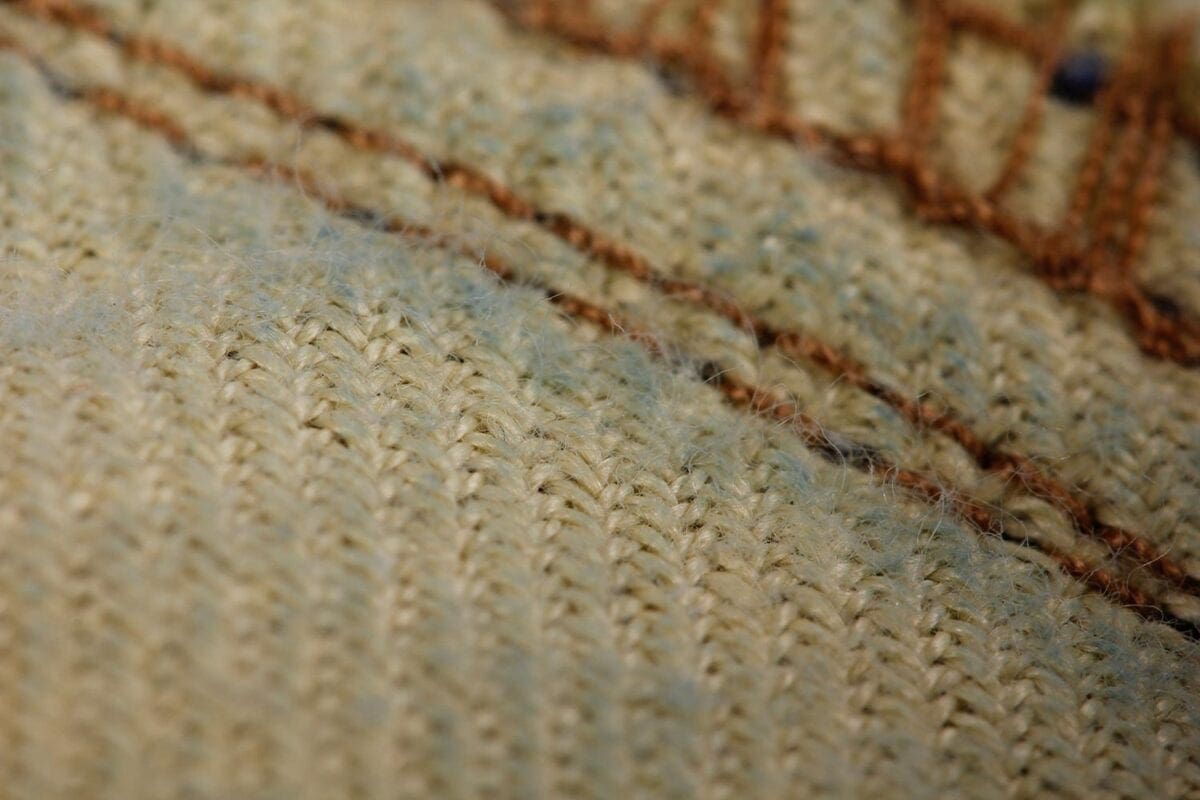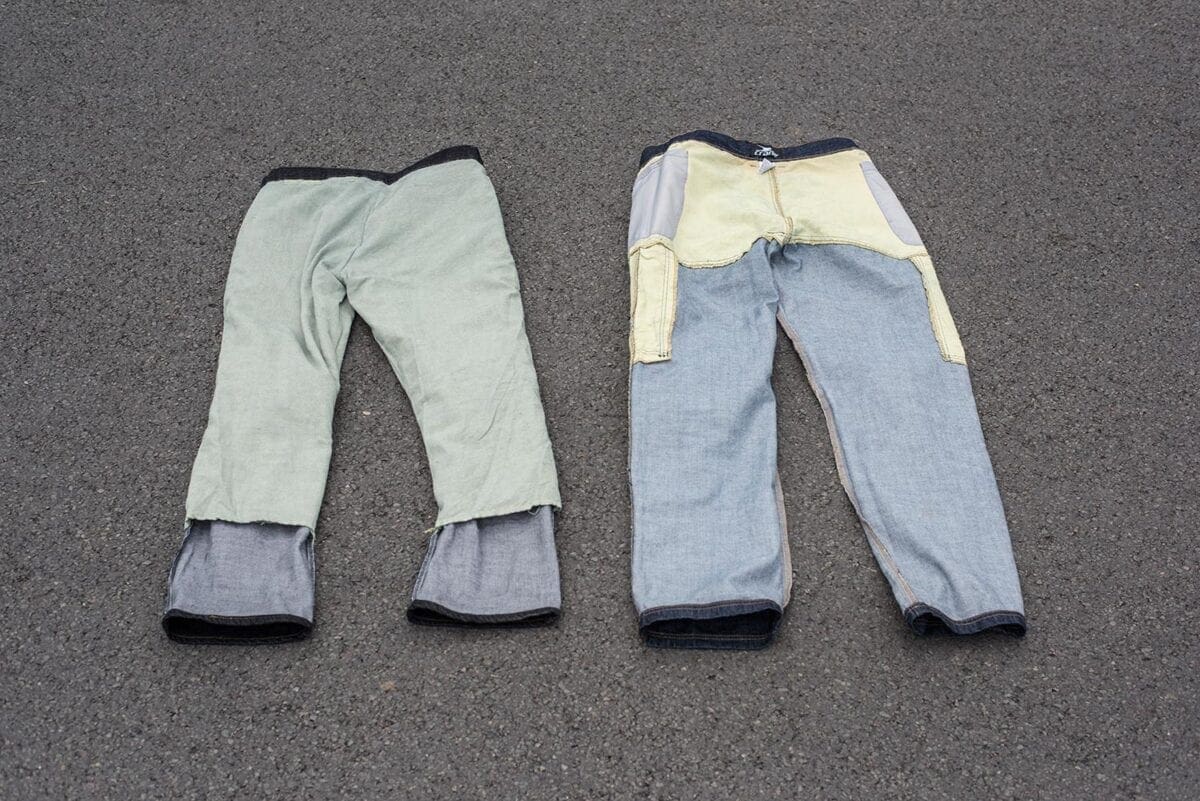With high-street supermarkets now selling motorcycle jeans, John Milbank finds out if you really do ‘get what you pay for’…
Photos Joe Dick
Here at MoreBikes we don’t like to look at the negatives of biking, but having fallen off a bike myself (ermm, a few times), I’ve got to admit that it does happen.
I used to ride in plain jeans when popping out to the shops – I figured they’d be okay if I wasn’t going too fast, and besides, I had mates who’d crashed in them without any injuries. That was until I fell off my old Honda Dominator. On a roundabout. At running pace. Just down the road from my house. I walked away fine, but my knee was a mess. It was proper biking kit all the way from then.
There’s a fantastic choice of gear now, and it doesn’t have to cost a fortune. Granted, if you want the best, you need to pay more, but there are also good options out there if you’re on a budget.
So how cheap can you go? One of our contributors recently reviewed a pair of premium-quality motorcycle jeans. Fully-lined with para-aramid, he compared them to a very cheap part-lined pair that he also owned. Sold by Aldi under the ‘Crane’ brand, they cost just £30, and are quite well constructed with what appears to be reasonable quality protective material covering the bum, hips and knees.
Interestingly, when I posted the review online, we received a lot of feedback from people stating that their Aldi jeans were fantastic, based not on their experience of a crash, but for being “cheap” and “comfortable”.

What’s inside them?
It’s important to understand that, while many bikers will talk about their ‘Kevlar jeans’, this is often (incorrectly) used to describe what is in fact a para-aramid or other specialist fabric.
Para-aramids have for many years been woven or knitted into a lightweight fabric to resist heat, abrasion, knives and bullets. They’re used in everything from automotive drive belts to military ballistic helmets. But Kevlar is actually the trade-name of a product made by Du-Pont; some brands use it, while other manufacturers use a quality alternative para-aramid, or even their own high-tech materials.
Covec and Pekev are two other technologies, with each used in motorcycle jeans. You’ll find the liquid-crystal polymers of Covec for instance (also used in Vectran) in ropes, sails and even Mars landers. Every type of fibre has its own properties and advantages.
Think of it like doing the Hoovering – people are often actually referring to Dyson, or Electrolux, or Henry.
Kevlar, Covec, K-Tech, Pekev, para-aramids… as more companies invest money in developing the kit to protect us bikers, our choices grow, which has to be a good thing!
Part-lined or fully-lined?
You’ll generally find jeans in two styles; part-lined and fully-lined. Good-quality part-lined jeans can offer decent protection, but where and how that protection is placed varies. Some brands will only cover the bottom and knees, whereas others also give coverage to the hips, or sometimes the entire front of the thighs.
Only fully-lined jeans will have the potential to gain CE approval, but even those without the thicker lining and ankle restraints required for approval can offer you good levels of protection however you fall.
If in doubt, turn the trousers inside out and look at what’s protected: you’re unlikely to slide on the insides of your knees, but what would happen if you came off your bike and landed on your front? Are your thighs protected? Also check how the protection is fitted; If it’s a small patch sewn onto the denim, it could come free and be of no use in a crash. Quality linings can also help prevent the jeans from tearing open at the crotch.
How much protection do I really need?
If money’s no object, you still might not choose the highest levels of protection. Many brands offer jeans in their range with CE-Level 1, and some even exceed the higher Level 2 approval… this testing standard looks not only at the garment’s impact and abrasion resistance, but also at its construction and fit. It’s your guarantee that the clothing is most likely to survive a serious tumble. But don’t be confused by gear that is CE approved, and others that have CE-approved protection fitted, as this refers just to the armour installed.
Ultimately, your choice is all about compromise; to achieve the highest performance, motorcycle jeans need multiple layers that can add bulk. Think about where and how you’re riding – better that you wear a pair with good protection for every trip, than don’t wear a pair when you don’t fancy it. My own jeans aren’t CE-approved, but I have every faith in them offering me the safety I need for day-to-day riding.
Whatever you choose, there are plenty of options available, which brings us back to the opportunity to kit yourself out in something that potentially costs less than a round of beers.
The test
This isn’t science. A CE-standard test requires the work of leading research and testing organisations like SATRA, but it doesn’t take a lab-coated boffin to tell you that, if you do crash a bike, you might not just slide on your bottom.
I’ve smacked onto my knees near home, tumbled sideways across McLeans at Donington, slid on my back under a local fly-over and sprawled on my front in Wales.
I wanted to keep this test simple, so by dragging a pair of quality, fully-lined motorcycle jeans, and a pair of budget-priced part-lined jeans, I hoped to get an idea of what could happen if things go pear-shaped.
Option one was to have me sat in the jeans and towed behind a car. Our Health and Safety department put a stop to that; option two was to sling them out the back of a car whilst driving down the road. Apparently this might contravene some traffic laws, so in the end I settled on Stretton Go Kart circuit in Leicester. Having raced pit-bikes there, I knew the track, and that the friendly owners would let me loose.
In keeping with the original online review, a new pair of Hood K7 jeans and a new pair of Aldi jeans were slipped onto two old pairs of motorcycle jeans, each filled with off-cuts of para-aramid. This created around 20kg of weight in each.
That’s a fair way from the weight of most of us bikers, and as I also wouldn’t be able to get up to speed, then drop the jeans onto the track (like in a real crash), both pairs travelled much further behind the kart than you would expect in a real incident that might involve a slide of a few seconds over tens of metres. This is a comparison – putting the two head-to-head still gives a very useful idea of the differences between the two products.
Getting up to just over 55mph, and letting the jeans flail around behind the kart, I completed four laps of the 850m circuit. It might sound ludicrous to expect any piece of protective equipment to last a slide of two miles, but if you watch the video at bit.ly/jeanstest you’ll see that these lighter-than-a-human dummies spent a lot of time in the air.
Remember too that the energy involved in an impact at speed is much greater than the slide that comes afterwards, so the longer drag duration just spreads that energy over a greater time. Of course, there’s a bit more to it than that, but remember – this is a direct comparison.
The results
It’s important that any bike jeans are well constructed. I’ve worn part-lineds from one of the premium brands, but the cheap pair here had the para-aramid patches sewn directly to the denim.
When this thread caught the track, the protection was allowed to move, which would not only reveal the skin beneath, but also allowed the aramid to bunch up and fail more quickly. Frankly, the damage to the jeans that would leave flesh exposed was frightening compared to the premium quality pair.
During the same drag, the fully-lined jeans survived much better. In fact, as they’re built of much higher-quality denim, and even the insides of the pockets are made of denim, there were few holes created.
Where the denim had failed, the para-aramid was intact, and at the knees, the armour was above the para-aramid, so the test only holed the denim. The cheap pair had burnt through the denim and para-aramid at the knees; while the armour protected this area, had it moved during a real slide it would have left your knee-cap exposed.
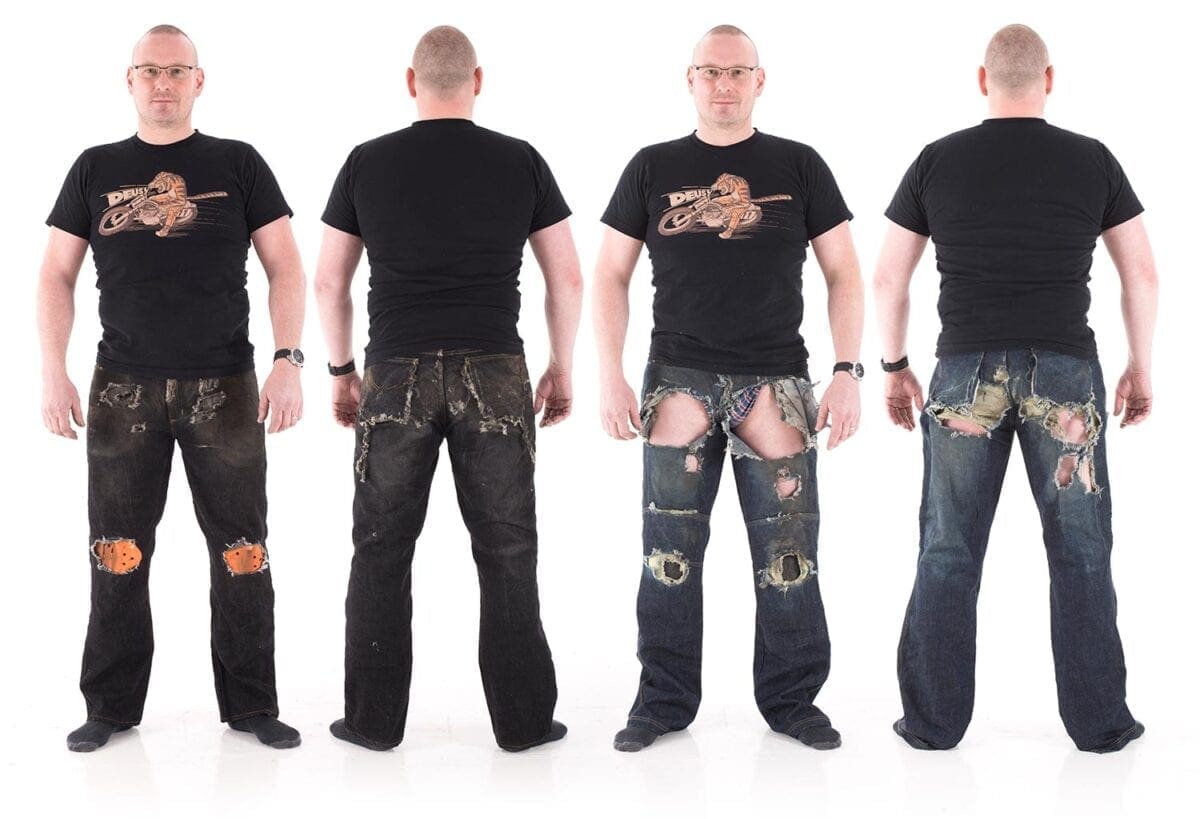
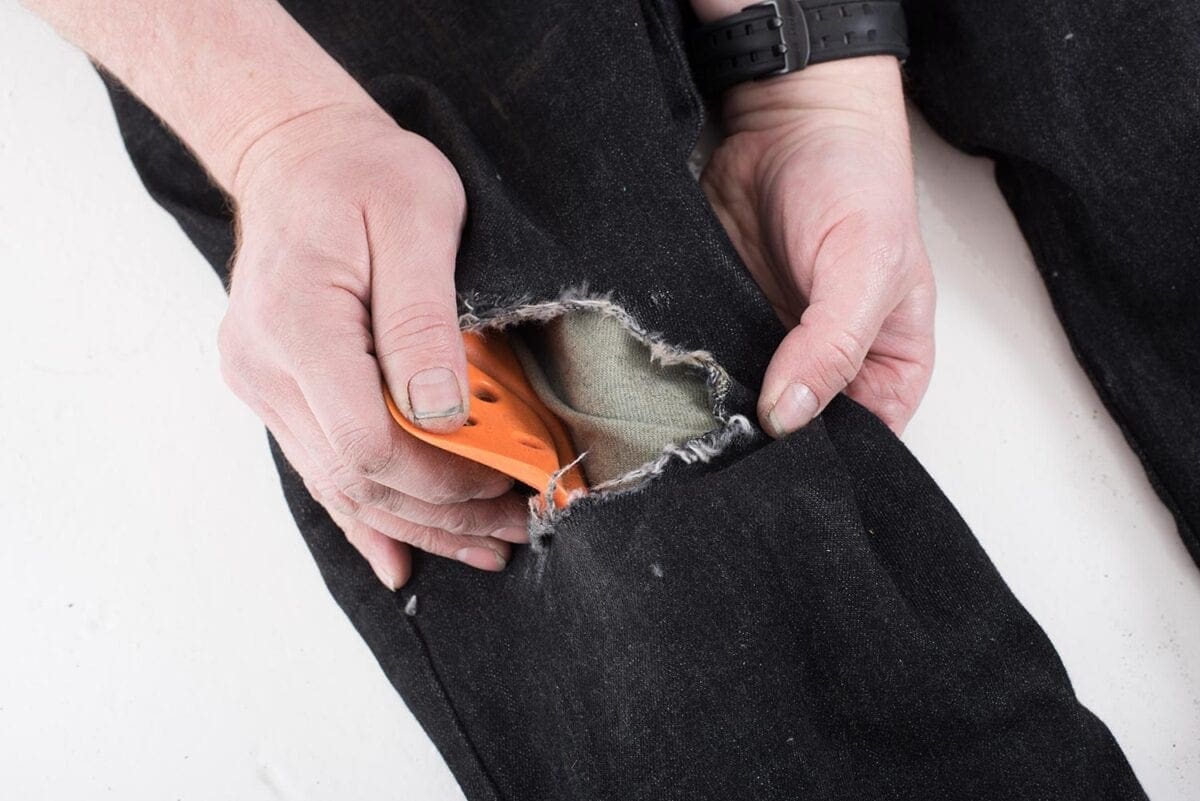
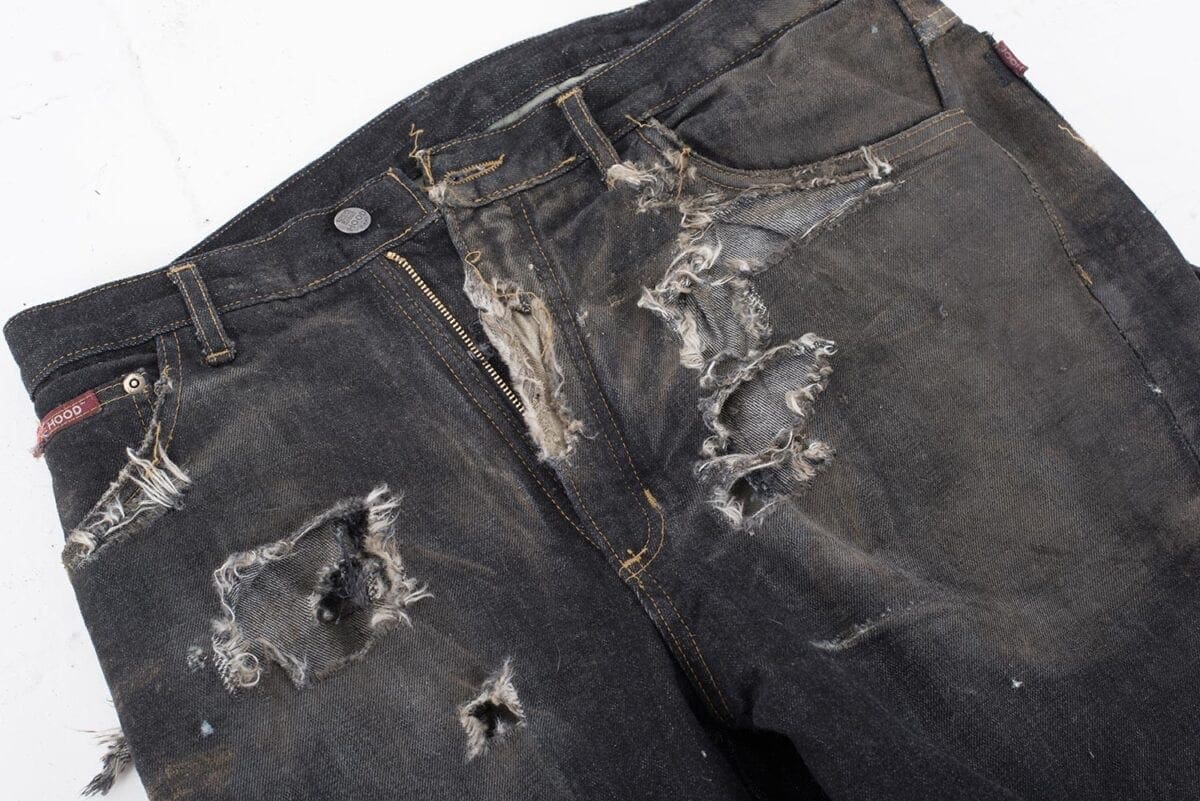

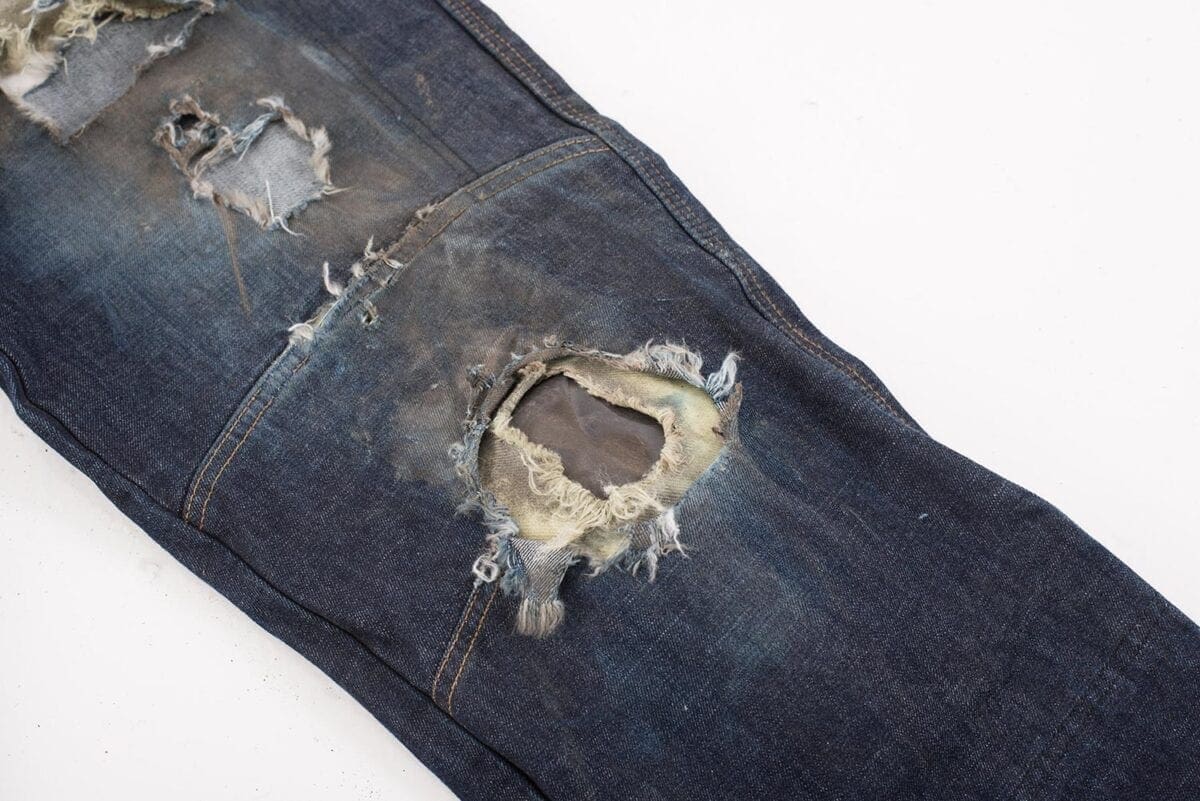
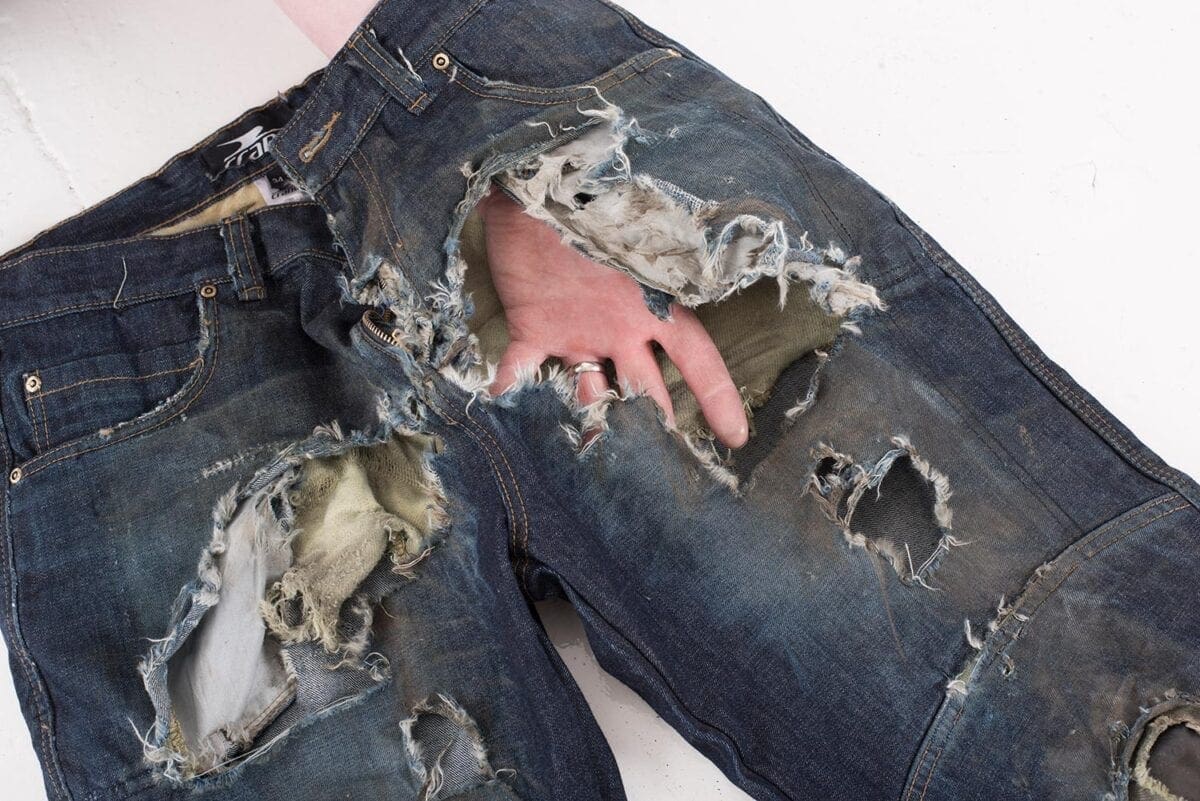
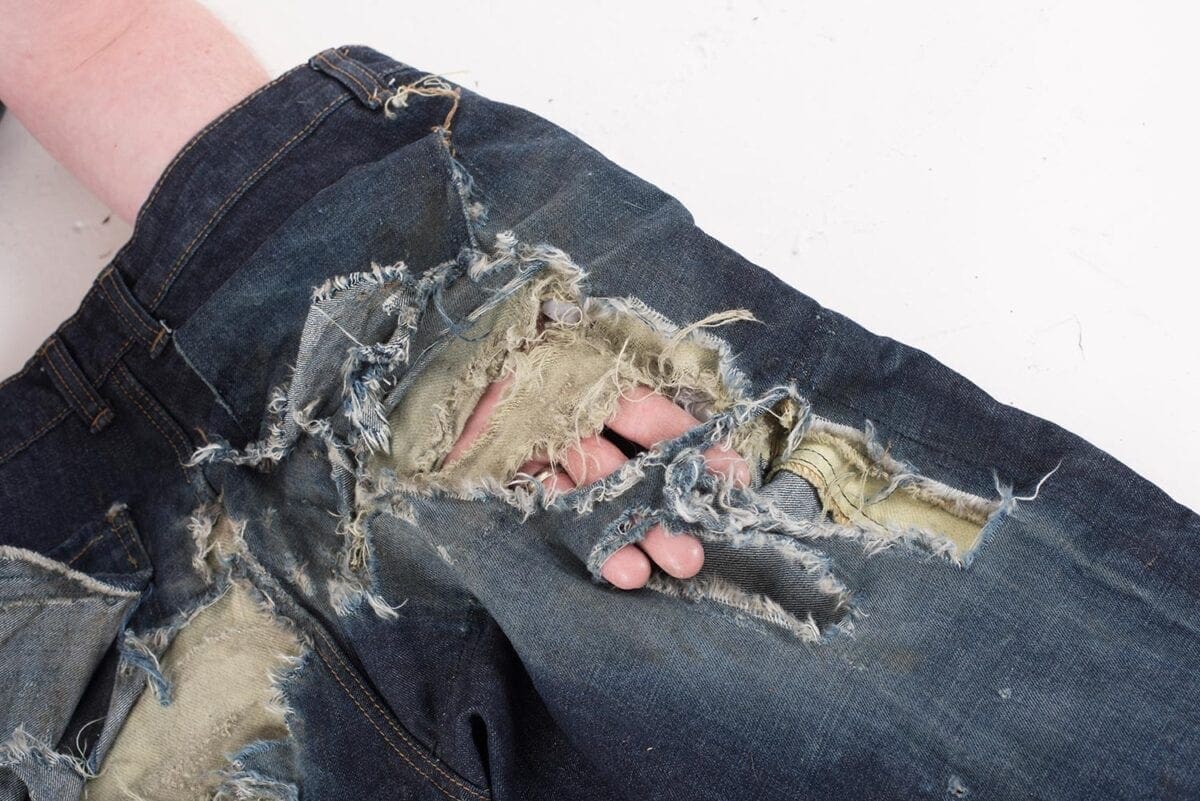
It’s your choice
These cheap jeans certainly offered some protection, and I’d be the first to say that, if you only have a very limited budget, then spend it on what you can. In fact, this Aldi pair had a superior construction to some unbranded ‘bargain’ jeans I saw at a recent show.
But every crash is different, and while part-lined jeans have been proven to save riders through good quality design, the top ones tend to have the para-aramid running a fair way down the back of the leg – much further than in this pair.
In this fairly extreme test, our premium-quality, fully-lined motorcycle jeans proved a valuable point that yes, you do get what you pay for. These are not CE-approved, but they are well built, from high-quality materials. Are they worth the extra money? I think so.



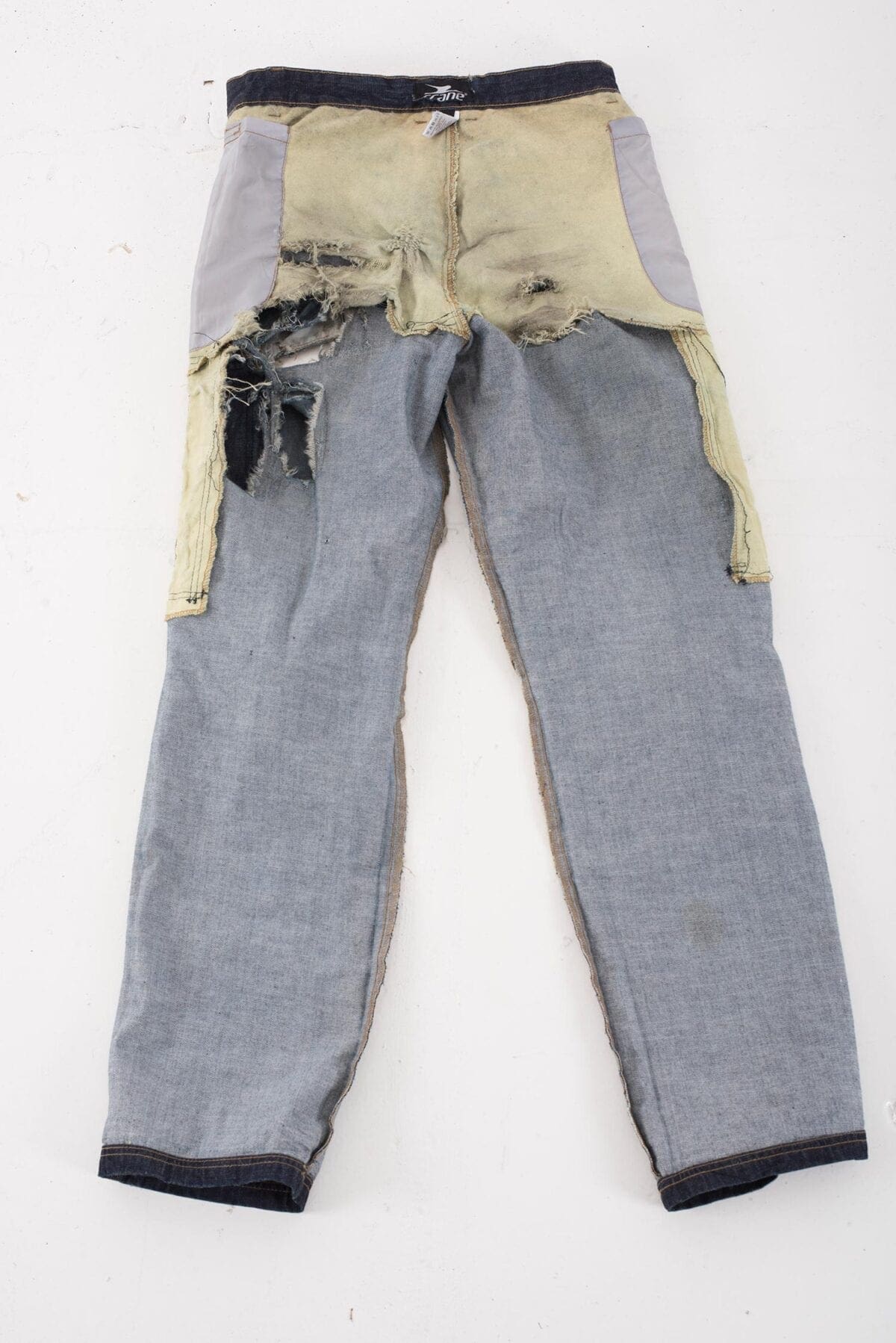
How to spot a good pair
Good quality denim is surprisingly resilient to a scuff with the road, but it does age and start to wear – quickly in the case of lower quality material. If you’re wearing a particularly poor pair of bike jeans, the denim could easily fail before it would on a pair of heavy-weight fashion jeans. If that impact occurs on an area not protected by a safety lining, you’re in trouble.
When buying motorcycle jeans, look for good-quality stitching, a decent weight to the denim and a consistency in colour between the panels. Unless you’re a materials expert, you can’t guarantee the best, but it’s a good indication the manufacturer has put some care into its product.
The Police view on cheap kit
We spoke to Cambridgeshire Road Policing’s Inspector Mark Rogers: “Roads are dirty and very hard; skin is no match when the two come into contact. All clothing is not equal and some garments will disintegrate like a well-used tea bag when they’re really needed.

“We wear CE-approved leathers for work, but I’ve bought some branded Kevlar jeans for myself. I would steer clear of non-branded stuff; you get what you pay for! I’ve also had the zip changed in my leather jacket, so I can zip the jeans to it.
“The stupidity of some people amazes me – spending thousands on their bike, and tuppence on the clothing. Buy the best you can afford and don’t skimp on safety; be safe & THINK!”
After posting this article online, an Aldi spokesperson contacted us for a comment: “Aldi is keen to point out that the Motorcycle Jeans tested in this experiment are from their 2014 Motorcycle range and that the Motorcycle Trousers in the current Motorcycling range… are fully CE Level 2 certified.”
This comment relates to the textile trousers – not denim – available in the 8th March 2015 ‘Special Buy’.


